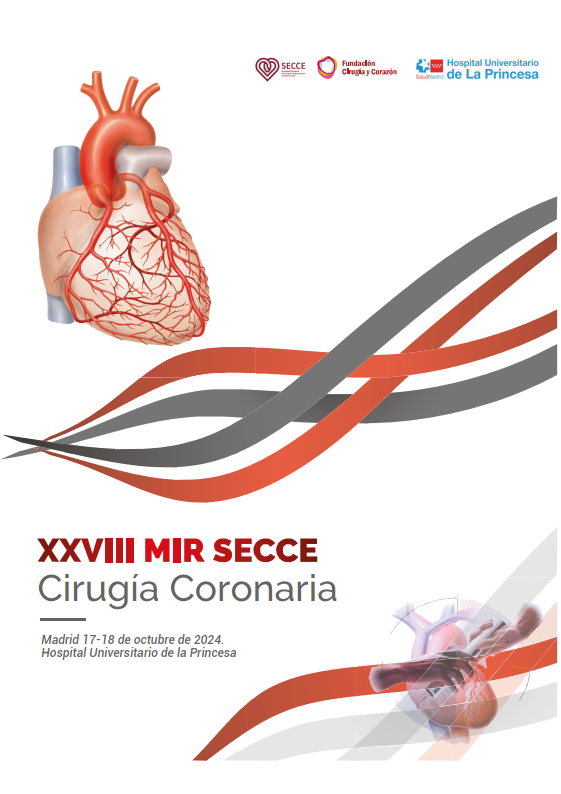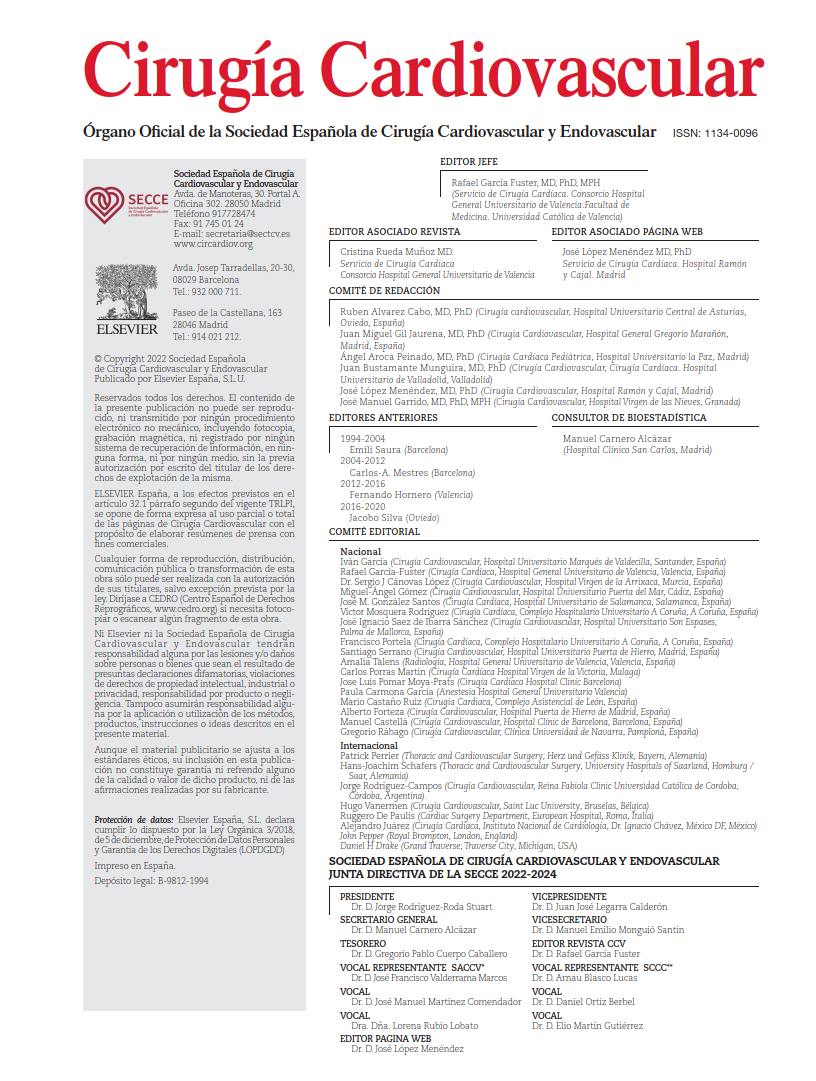The selection of grafts for CABG has been widely investigated, with arterial grafts consistently showing superior long-term outcomes compared with venous conduits. In the Arterial Revascularization Trial (ART), which compared bilateral internal thoracic artery (BITA) revascularization to single ITA use, no significant difference in 10-year mortality was observed. However, notable limitations included protocol deviations in 14% of patients assigned to the BITA group (who received only one ITA), and the use of radial artery grafts in 22% of those allocated to the single ITA group. A secondary analysis from the same trial reported a significant survival benefit in patients who received two or more arterial grafts, a hypothesis currently being addressed by the ROMA trial (Randomized Comparison of the Clinical Outcome of Single vs. Multiple Arterial Grafts), a large international randomized trial including over 3000 patients across more than 80 centers worldwide.
Unlike prior studies, the present investigation focused not only on the number of arterial grafts but also on their configuration—an aspect rarely addressed in the literature. Based on the premise that arterial conduits are the optimal choice for left coronary artery system revascularization, the authors analyzed which BITA configuration yields superior outcomes.
This multicenter retrospective study included 1258 patients who underwent CABG with BITA between 2009 and 2015. Patients were categorized into 3 groups according to the configuration:
- LR group: in situ left ITA to the left anterior descending artery (LAD) and in situ right ITA to the left circumflex artery (LCX), configured as a T or Y composite graft (classical Tector technique);
- RL group: in situ right ITA to LAD (crossing the midline) and in situ left ITA to LCX, also as a T or Y composite graft (Taggart’s modified approach);
- Free group: in situ left ITA to LAD and free right ITA to LCX with proximal anastomosis to the aorta.
Additional grafts were performed with saphenous vein grafts (SVGs) or the gastroepiploic artery for right coronary artery targets, and with the radial artery or SVG for distal LCX branches. The primary endpoint was the incidence of MACEs; graft patency at 4 years was assessed as a secondary endpoint.
Most procedures were performed off-pump or with beating-heart techniques. Significant differences favored the free group regarding all-cause mortality at 10 years (p = .004) and MACE incidence (p < .001), although no significant differences were found for cardiac mortality, myocardial infarction, or repeat revascularization. Graft configuration to the LAD was not associated with graft failure. However, patency of the ITA to the LCX was significantly lower in the LR group, with chronic obstructive pulmonary disease identified as an independent risk factor for graft failure.
Based on these findings, the authors concluded that using a free right ITA may offer long-term advantages in terms of all-cause mortality, lower MACE incidence, and improved patency when anastomosed to the LCX.
COMMENTARY:
This is not the first report suggesting that the configuration of internal thoracic arteries may act as an independent prognostic factor; however, it is likely one of the largest series on this topic thanks to its multicenter design.
Each of the configurations analyzed presents specific advantages and drawbacks. Both in situ approaches benefit from native inflow and reduce the number of proximal anastomoses required. Nevertheless, routing the right ITA (RITA) across the anterior surface of the heart increases the risk of injury during reoperation, and when distal or posterolateral coronary targets must be reached, conduit length may become a limiting factor. Conversely, the use of a free RITA graft offers greater versatility for revascularizing the entire left coronary tree—and even the right side—in cases of chronic occlusion or subtotal stenosis. That said, the longer the free RITA and the greater the number of distal anastomoses, the higher the risk of competitive flow.
Although not considered in this study due to the small sample size, a notable alternative is the free RITA configured as a Y-graft from the left ITA (LITA). This allows for complete left-sided revascularization while partially harvesting the RITA, which can be advantageous in patients at risk of sternal dehiscence. However, the durability of this technique depends entirely on the patency of the LITA-RITA anastomosis.
Ultimately, favorable outcomes hinge upon the experience and technical skill of the surgical team. Proficiency in harvesting techniques such as ITA skeletonization and in advanced coronary anastomoses (e.g., piggyback or foldback techniques) allows for optimal tailoring of the configuration to each patient.
In summary, selecting a BITA configuration involves multiple patient-specific factors, including coronary anatomy, cardiovascular risk profile and comorbidities, chest wall dimensions, graft length, and severity of coronary stenosis. All these considerations should guide not only the choice of BITA configuration when using both mammary arteries, but also the selection of conduits themselves.
REFERENCE:
Hayashi Y, Shimamoto T, Numata S, Goto Y, Komiya T, Yaku H, Okawa Y, Ito T. Clinical and Angiographic Outcomes of Bilateral Internal Thoracic Artery Revascularization: In Situ vs Free Grafts. Ann Thorac Surg. 2025 Feb;119(2):351-360. doi: 10.1016/j.athoracsur.2024.09.012
Taggart DP, Benedetto U, Gerry S, Altman DG, Gray AM, Lees B, et al. Bilateral versus Single Internal-Thoracic-Artery Grafts at 10 Years. N Engl J Med. 2019 Jan 31;380(5):437-446. doi: 10.1056/NEJMoa1808783
Kawajiri H, Grau JB, Fortier JH, Glineur D. Bilateral internal thoracic artery grafting: in situ or composite? Ann Cardiothorac Surg. 2018 Sep;7(5):673-680. doi: 10.21037/acs.2018.05.16



